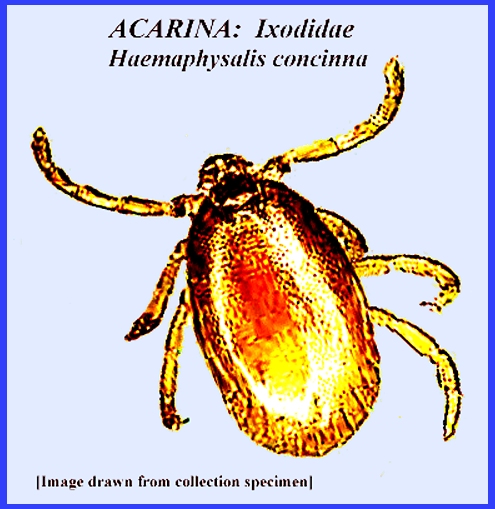File: kyasanurforestdisease.htm> <Medical
Index> <General Index> Site Description Glossary <Navigate
to Home>
|
KYASANUR FOREST DISEASE (Contact) Please
CLICK on
image & underlined links for details:
Tick
larvae feed on birds and small forest rodents, but the nymphs feed on monkeys
and humans. Monkeys and probably
shrews are believed to be the main amplifying and reservoir hosts. Larger mammals (deer, bison, cattle)
coming into close contact with ticks in the forest serve as hosts for adult
ticks and maintain large tick populations.
There is transstadial and maybe transovarial transmission among the
tick vectors (Service 2008). The
epidemiology is affected by changes in human activity, such as deforestation
and agriculture that can be followed by changing ecology and disease
outbreaks. = = = = = = = = = = = =
= = = = = = = = Key References: <medvet.ref.htm> <Hexapoda> Matheson, R. 1950.
Medical Entomology. Comstock
Publ. Co, Inc. 610 p. Service, M. 2008. Medical
Entomology For Students. Cambridge
Univ. Press. 289 p Legner, E.
F.
1995. Biological
control of Diptera of medical and veterinary importance. J. Vector Ecology 20(1): 59_120. Legner,
E. F. 2000. Biological control of aquatic
Diptera. p. 847_870. Contributions to a Manual of Palaearctic
Diptera, Vol. 1, Science Herald, Budapest. 978 p. |
